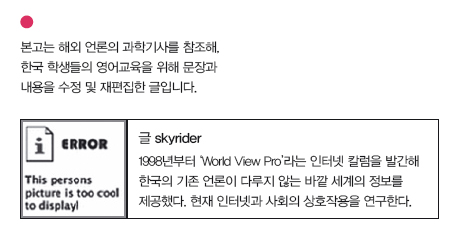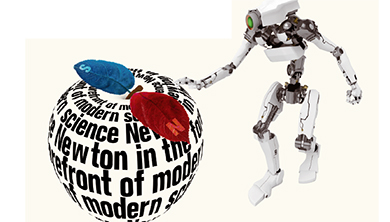

Recently we have made two important advancements in medical sciences. Those are vaccines for Malaria, and preventive medicines for AIDS. Firstly, let’s take a look at the Malaria vaccine first. In a first-ever malaria vaccine tested in children in sub-Saharan Africa cut the risk of infection with malaria by about half. Scientists working in a public-private partnership involving GlaxoSmithKline Biologicals, the PATH Malaria Vaccine Initiative and the Bill and Melinda Gates Foundation, at 11 sites in Africa, reported that the experimental vaccine known as RTS,S was 56% effective in protecting children aged 5 to 17 months from infection. The vaccine was also 47% effective in preventing severe cases of the disease. The trial is not complete. Researchers are continuing to follow a younger group of infants, aged 6 to 12 weeks, who are being vaccinated as well. This group would be the target population for the malaria vaccine, should it prove effective. Both age groups will be followed for nearly three years to track malaria infections and to see how long protection lasts. Scientists are also collecting additional safety data in infants. The trial, which involves a total of 15,460 children, will be completed in 2014.
Secondly, let’s take a look at the preventive medicine for AIDS. The treatment of HIV has come a long way, thanks to antiretroviral (ARV) drugs that can lower levels of the virus in the body, keeping people healthy and reducing the risk of HIV transmission. Increasingly, though, studies have also shown that the same drugs used to treat existing infections can also help protect HIV-free people from becoming infected. Last year, two groundbreaking trials showed that HIV-free people were significantly less likely to become infected with the virus if they took the antiretroviral drug called Truvada every day.
In one study led by University of Washington researchers, which involved 4,758 heterosexual couples in which one partner was HIV positive and the other was not, transmission of the virus was reduced by 73% after three years, compared with placebo. In another study of 1,200 healthy men and women, led by the Centers for Disease Control and Prevention, taking Truvada reduced the risk of HIV infection by 63%. The results add to the evidence that using ARVs could help control the still growing AIDS epidemic in the developing world.

해석 과학기술이 기적의 약을 준다.
최근 의과학 분야에서 두 가지 주요한 진전이 있었다. 바로 말라리아를 위한 백신 개발과 AIDS 예방약 개발이다. 우선 말라리아 백신에 대해 알아보자. 사하라 남쪽 아프리카 어린이들을 대상으로 한 최초의 말라리아 백신 임상 실험이 이뤄졌다. 그 결과 말라리아 감염 위험이 대략 반으로 줄어들었다. ‘글락소 스미스 클라인 제약회사’, ‘PATH 말라리아 백신 계획’, ‘빌과 멜린다 게이츠 재단’ 등 공공기관과 민간기업이 참여해 이뤄진 이 연구에서 과학자들은 아프리카 11개 지역에서 실험을 했다. 그 결과 RTS, S라고 알려진 시험 백신이 5~17개월 된 유아의 말라리아 감염을 56%예방하는 효과를 보였다. 이 백신은 또 말라리아 증상이 더 심해지는 현상을 막는 효과가 47% 있었다.
이 실험은 아직 완성된 것은 아니다. 연구자들은 6~12주 정도 되는 영아들에게도 백신을 접종했고 현재 결과를 추적하고 있다. 만일 백신이 효과가 있다면 이 나이대의 그룹이 주요한 백신접종 대상이 될 전망이다. 유아와 영아, 두 연령대의 그룹 모두 이후 3년 동안 말라리아 감염여부를 추적해서 예방효과가 얼마나 오래 지속되는지 관찰한다. 과학자들은 또 영유아들에게서 추가적인 안전성 여부 데이터도 수집한다. 1만 5460명의 어린이를 대상으로 한 이 실험은 2014년 끝날 예정이다.
두 번째로 에이즈 예방약을 살펴보자. 에이즈 바이러스인 HIV에 대한 치료는 몸 안에 있는 바이러스의 레벨을 낮추는 ARV약품을 발견한 이후 많은 진전이 있었다. ARV는 HIV에 감염된 사람을 건강하게 하고 HIV 전파 위험을 낮췄다. 그런데 ARV가 HIV에 아직 감염되지 않은 사람들의 감염을 예방하는 효과가 있다는 연구결과가 나오고 있다. 2011년, HIV에 감염되지 않은 사람들을 대상으로 행해진 두 개의 중요한 실험에서 ‘트루베이다’라고 불리는 항레트로바이러스 약품을 매일 복용한 사람들은 매우 낮은 감염률을 보였다.
워싱턴대학의 연구자들은 둘 중 한 명만 HIV감염자인 4758쌍의 이성커플을 대상으로 실험을 했다. 그 결과 3년 뒤, 바이러스의 감염은 대조군(플레시보)과 비교했을 때 73% 감소했다. 1200명의 건강한 남성과 여성을 대상으로 질병통제 예방센터(CDCP)가 실시한 또 다른 실험에서, 트루베이다를 복용한 사람들은 HIV 감염위험이 63% 낮아졌다. 이 결과는 지속적으로 증가하는 개발도상국에서의 AIDS 유행을 ARV가 막을 수 있다는 근거다.
















